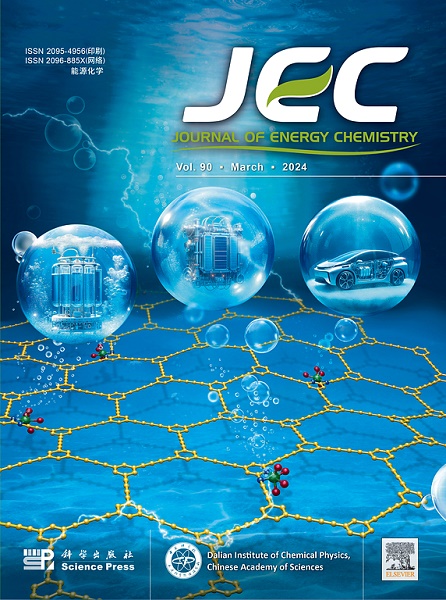Self-activated micropores tailor carbon layer stacking and graphitic microstructures for high-performance sodium storage
IF 13.1
1区 化学
Q1 Energy
引用次数: 0
Abstract
Lignin-derived hard carbon shows potential as an anode material for sodium-ion batteries (SIBs) due to its high carbon content and aromatic structure, but its limited reversible adsorption sites and low conductivity hinder performance. This study introduces a self-activation strategy to optimize carbon layer stacking and surface functional groups in microporous carbon, significantly enhancing sodium storage capacity and rate performance. By utilizing oxygen-containing functional groups in organic solvent lignin, we induce micropore formation during pyrolysis, effectively regulating graphite domains and closed pores structures without disrupting carbon layer growth. Unstacked graphene layers serve as efficient electron transport channels and expose additional adsorption sites, simultaneously increasing sodium storage capacity and intrinsic conductivity. The resultant S-OLHC demonstrates a remarkable sodium storage capacity of 358 mA h/g at 0.05 A/g after 200 cycles and maintains 231 mA h/g after 1000 cycles at 2 A/g. This strategy eliminates the need for additional pore-forming agents, offering a simpler, more efficient, and environmentally friendly approach compared to traditional activation methods. This work advances the rational design of high-performance biomass-derived hard carbon for SIBs by leveraging inherent structural characteristics and provides a sustainable low-carbon strategy for lignin valorization in renewable energy storage.

自激活微孔为高性能钠存储定制碳层堆叠和石墨微观结构
木质素衍生的硬碳由于其高碳含量和芳香结构而显示出作为钠离子电池(SIBs)负极材料的潜力,但其有限的可逆吸附位点和低电导率阻碍了其性能。本研究引入了一种自激活策略,优化微孔碳的碳层堆叠和表面官能团,显著提高了钠的储存容量和速率性能。通过利用有机溶剂木质素中的含氧官能团,在热解过程中诱导微孔的形成,在不破坏碳层生长的情况下有效调节石墨畴和封闭孔结构。未堆叠的石墨烯层作为有效的电子传输通道,暴露额外的吸附位点,同时增加钠的存储容量和固有电导率。结果表明,S-OLHC在0.05 a /g下可在200次循环后保持358 mA h/g的钠存储容量,在2 a /g下可在1000次循环后保持231 mA h/g的钠存储容量。与传统的活化方法相比,该策略不需要额外的成孔剂,提供了一种更简单、更高效、更环保的方法。本研究利用其固有的结构特性,为sib提供了高性能生物质衍生硬碳的合理设计,并为可再生能源存储中的木质素增值提供了可持续的低碳策略。
本文章由计算机程序翻译,如有差异,请以英文原文为准。
求助全文
约1分钟内获得全文
求助全文
来源期刊

Journal of Energy Chemistry
CHEMISTRY, APPLIED-CHEMISTRY, PHYSICAL
CiteScore
19.10
自引率
8.40%
发文量
3631
审稿时长
15 days
期刊介绍:
The Journal of Energy Chemistry, the official publication of Science Press and the Dalian Institute of Chemical Physics, Chinese Academy of Sciences, serves as a platform for reporting creative research and innovative applications in energy chemistry. It mainly reports on creative researches and innovative applications of chemical conversions of fossil energy, carbon dioxide, electrochemical energy and hydrogen energy, as well as the conversions of biomass and solar energy related with chemical issues to promote academic exchanges in the field of energy chemistry and to accelerate the exploration, research and development of energy science and technologies.
This journal focuses on original research papers covering various topics within energy chemistry worldwide, including:
Optimized utilization of fossil energy
Hydrogen energy
Conversion and storage of electrochemical energy
Capture, storage, and chemical conversion of carbon dioxide
Materials and nanotechnologies for energy conversion and storage
Chemistry in biomass conversion
Chemistry in the utilization of solar energy
 求助内容:
求助内容: 应助结果提醒方式:
应助结果提醒方式:


